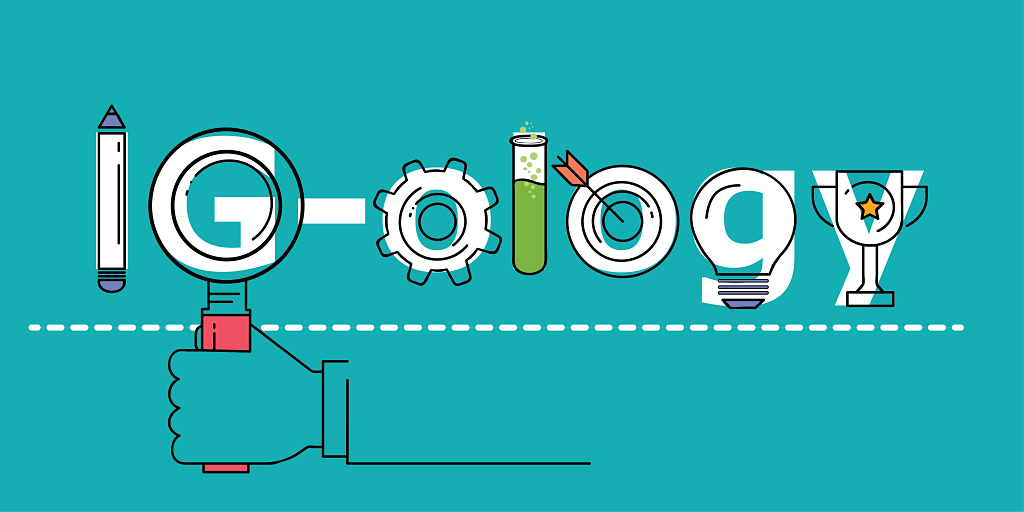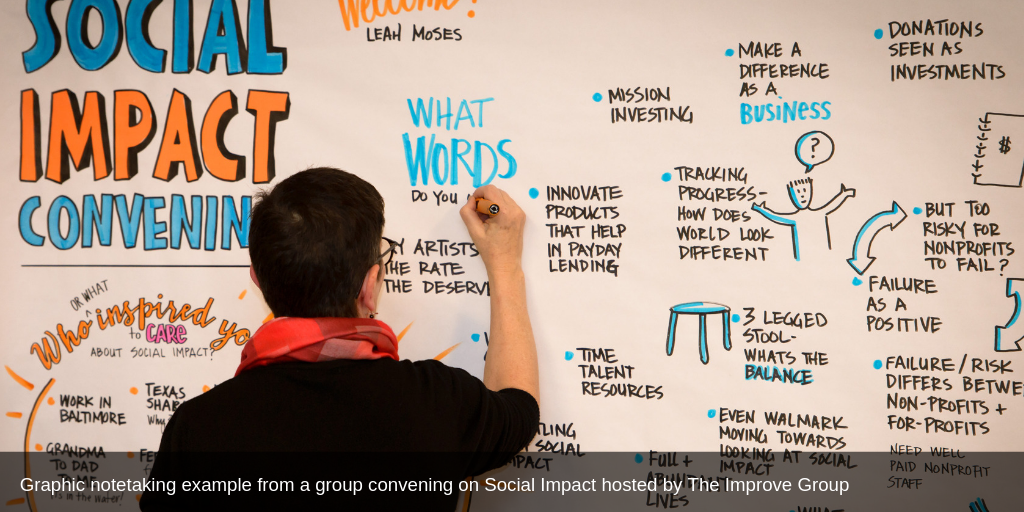
 Hello! I am Audrey McIntyre and in this month’s IG-ology I am going to talk about a visual process that can help individuals and groups gain more clarity in their work. Graphic notetaking (also known as graphic or visual recording) is a fun and creative way to lead workshops or record information by using imagery to help convey information. Humans tend to be visual learners, so using drawings can help people learn and remember information. It can also help us think in new, creative ways about a topic or make connections we otherwise would not, as well as simply making certain things stand out on a page or whiteboard!
Hello! I am Audrey McIntyre and in this month’s IG-ology I am going to talk about a visual process that can help individuals and groups gain more clarity in their work. Graphic notetaking (also known as graphic or visual recording) is a fun and creative way to lead workshops or record information by using imagery to help convey information. Humans tend to be visual learners, so using drawings can help people learn and remember information. It can also help us think in new, creative ways about a topic or make connections we otherwise would not, as well as simply making certain things stand out on a page or whiteboard!
Graphic notetaking doesn’t mean you have to be a skilled artist – all it takes is a willingness to experiment and have some fun with doodling! One easy way to incorporate it is to draw boxes or banners around a main idea or draw arrows to connect ideas. You can also have fun with it by drawing people (even just stick figures!) debating the sides of a problem or drawing images that depict the most important concepts in your work.

Graphic notetaking can be used both in your personal notes and for facilitating a group. In facilitation, it can be a useful way to gain participation as you ask people for input on how to graphically represent a concept or to draw a concept themselves. This can be a little challenging with more abstract ideas, and if you’re doing graphic notetaking for a group, may lead to some debate or conversation about how to best define or represent a concept. For example, I recently worked with a group trying to graphically represent the idea of equity. Each group member had differing ideas about how to visualize the concept. We spent a good deal of time discussing what aspects or interpretations of equity are most relevant to our group and important to convey. This valuable process helped the group reach clarity on how we each see and value equity and yielded a drawing that was truly representative of the whole group.
If you’re feeling inspired to learn more about graphic notetaking, here are a few resources to help you get started:
- The Drawing Change and Bikablo blogs provide graphic notetaking tips for individuals and facilitating groups.
- Verbal to Visual is a fantastic YouTube channel providing graphic notetaking tutorials.
- The Drawing Together activity developed by Liberating Structures helps groups create closer connections and reveal insights or understanding that is not always accessible with verbal methods.
